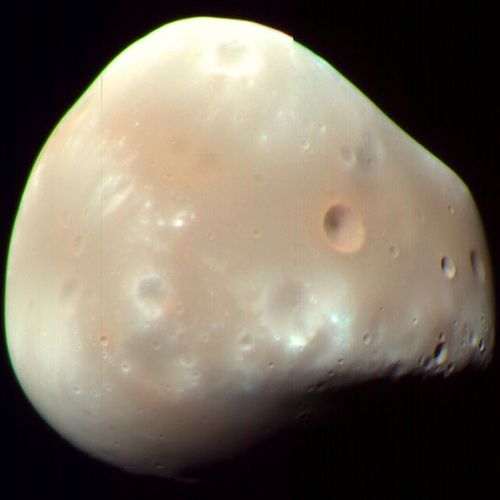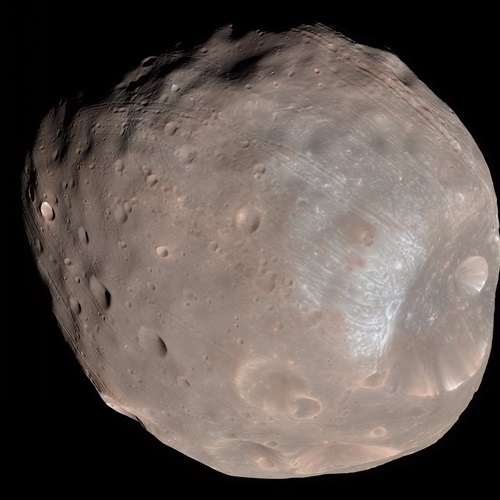
|

|
The fourth planet from the Sun Mars is a dusty, cold, desert world with a very thin atmosphere. This dynamic planet has seasons, polar ice caps, extinct volcanoes, canyons and weather.NASA missions have found lots of evidence that Mars was much wetter and warmer, with a thicker atmosphere, billions of years ago. When the solar system settled into its current layout about 4.5 billion years agoMars formed when gravity pulled swirling gas and dust in to become the fourth planet from the Sun. Mars is about half the size of Earth, and like its fellow terrestrial planets, it has a central core, a rocky mantle and a solid crust.
With a radius of 2,106 miles> (3,390 kilometers), Mars is about half the size of Earth. If Earth were the size of a nickel, Mars would be about as big as a raspberry. From an average distance of 142 million miles (228 million kilometers) ,Mars is 1.5 astronomical units away from the Sun. One astronomical unit (abbreviated as AU), is the distance from the Sun to Earth. From this distance, it takes sunlight 13 minutes to travel from the Sun to Mars.
As Mars orbits the Sun, it completes one rotation every 24.6 hours, which is very similar to one day on Earth (23.9 hours). days are calue">lled sols—short for "solar day." A year on Mars lasts 669.6 sols, which is the same as 687 Earth days. Mars' axis of rotation is tilted 25 degrees with respect to the plane of its orbit around the Sun. This is another similarity with Earth, which has an axial tilt of 23.4 degrees. Like Earth, Mars has distinct seasons, but they last longer than seasons here on Earth since Mars takes longer to orbit the Sun (because it's farther away). And while here on Earth the seasons are evenly spread over the year, lasting 3 months (or one quarter of a year), on Mars the seasons vary in length because of Mars' elliptical, egg-shaped orbit around the Sun.

|

|

|
Go To Mars |

|